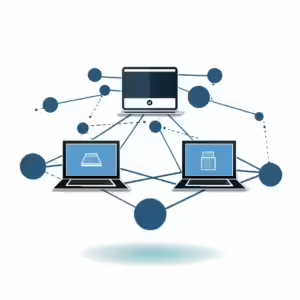Microservices architecture: A modern approach to scalable and flexible software development
Microservices architecture has established itself as a significant trend in software development. It provides a flexible and scalable method to develop and maintain complex applications. This article discusses the concept of microservices architecture, its benefits, challenges, and application areas.
What are Microservices?
Microservices are a software application architecture and organization method in which an application is developed as a collection of loosely coupled services. Each microservice is a small, autonomous process that performs a specific task and communicates through well-defined APIs. These services can be developed, deployed and scaled independently of each other.
Key features of microservices architecture
- Modularity: An application is divided into smaller, independent modules (microservices).
- Decentralization: Each microservice has its own data management and logic.
- Independence: Microservices can be developed and updated independently of each other.
- Flexible technology choice: Teams can choose the technologies best suited to their service.
- Resilience: Failures in a microservice do not affect the entire application.
Advantages of Microservices Architecture
- Agility and speed: Enables fast development cycles and easy updates.
- Scalability: Services can be scaled as needed.
- Robustness: Failures in a microservice have less impact on the overall application.
- Technology independence: Different microservices can be developed in different technologies.
Challenges with microservices
- Network complexity: Communication between services can be complex.
- Data consistency: Ensuring consistency across different services.
- Monitoring and Security: Difficulties in monitoring distributed systems and implementing comprehensive security measures.
Application areas of microservices
- Web-based applications: Particularly useful for complex, scalable web applications.
- Cloud-native applications: Ideal for use in the cloud as they allow for easy scaling and maintenance.
- Enterprise Applications: Enables greater flexibility and agility in developing and maintaining large enterprise systems.
Conclusion
Microservices architecture offers a modern approach to developing software applications that emphasizes agility, flexibility and scalability. While it poses complexity and management challenges, it enables companies to quickly respond to market changes and efficiently scale and maintain their software. In an increasingly dynamic and technologically diverse world, microservices architecture is a key concept for developing future-ready applications.






